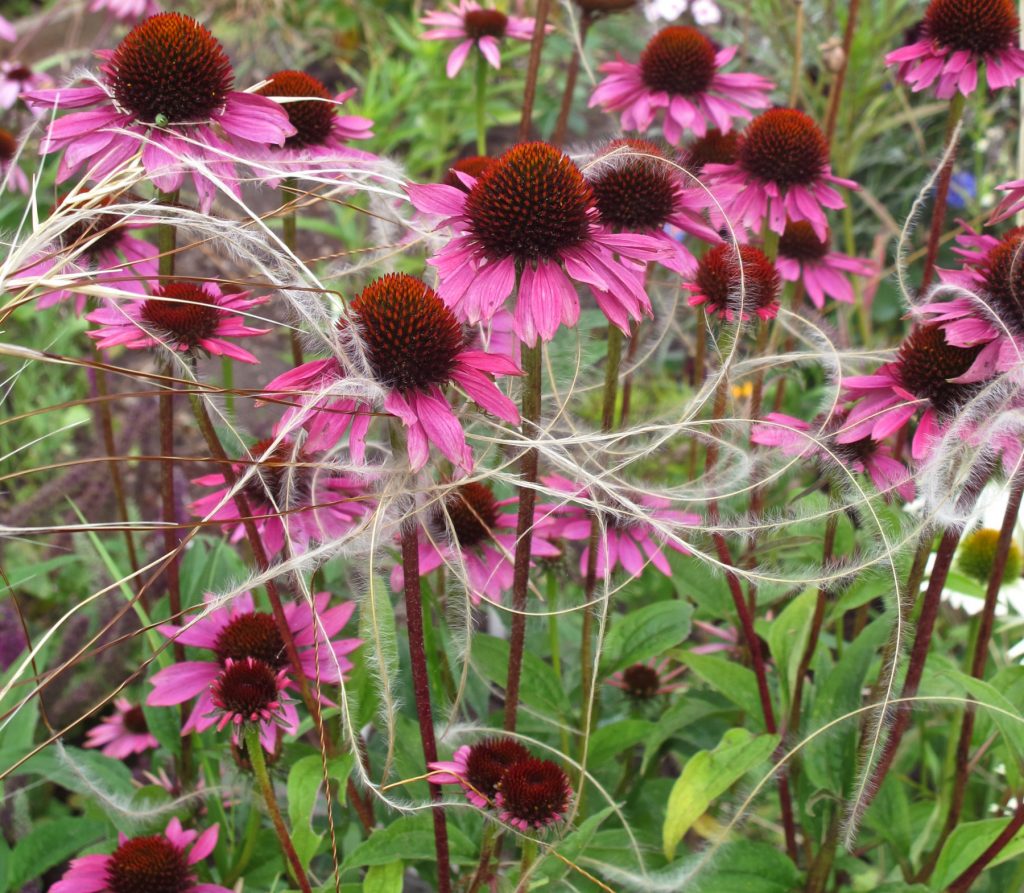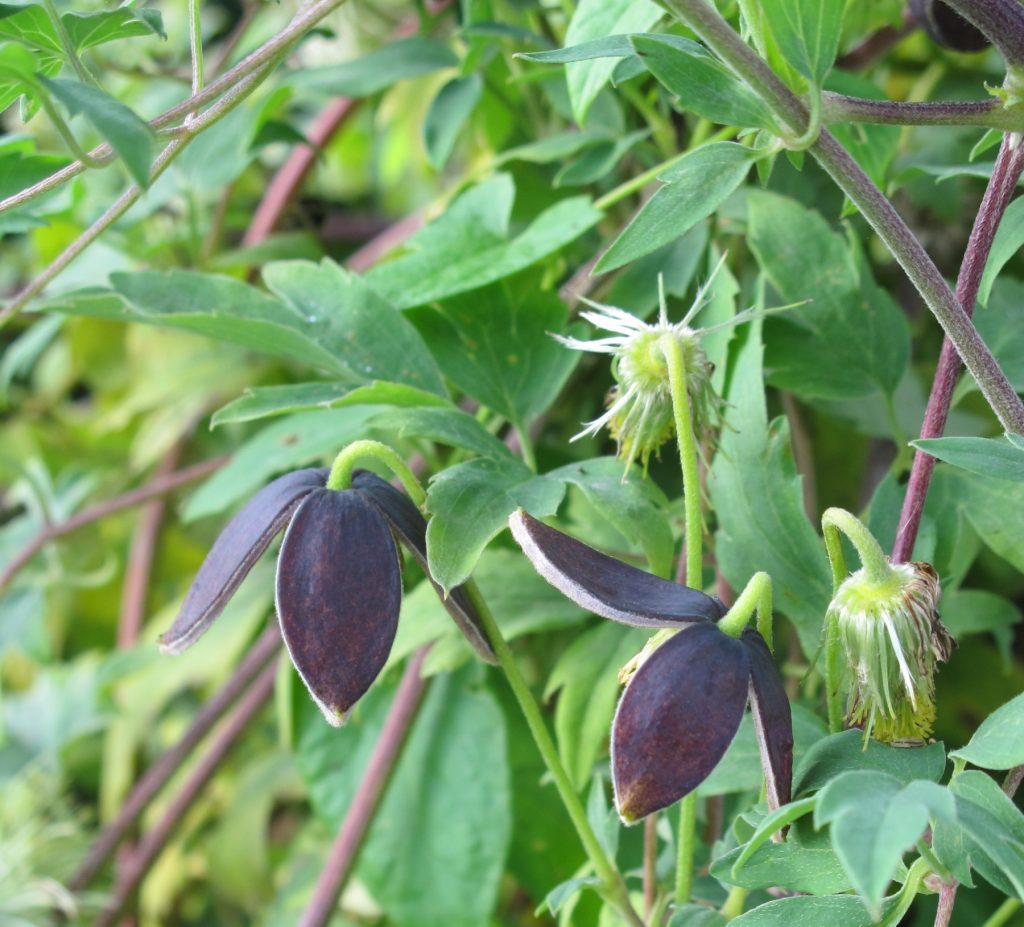
One of the best things about having a Hartley greenhouse is being able to propagate and that means plants for free. And that’s VERY important to those of us with Yorkshire roots. Oh yes, it is! Midsummer is a perfect time to start and it needn’t be complicated, despite what you read in books. I use half-size, rigid-plastic seed trays full of coarse horticultural sand for most cuttings. I have six of seven of these in the shadiest part of the greenhouse and I keep the sand moist. It’s there when I need it – no mixing required – just pop it in.
The seed trays have to be clean and the sand must be moisture-retentive coarse sand, because fine horticultural sand turns to dust within hours – killing your cuttings. Every time I’m gardening, I look for suitable cutting material and, once I’ve gathered the material, the cuttings get plunged in. If I hear a sickening snap while I’m weeding, it may well make a cutting, so in it goes.
There are a few things that matter when it comes to cuttings. The material must be semi-ripe and that means that it doesn’t feel soft and snappable. A good cutting is pliable and flexible in your fingers. If it bends it will probably work. The other thing is there should be no flower buds and this may mean pinching the tips out of fuchsias, penstemons, salvias and pelargoniums. You must trim most cuttings below a leaf joint, because it will root far more easily if the meristem is exposed. Make sure at least half of your cutting is submerged. If you can get two-thirds into the sand, so much the better. If your cutting has large leaves, snip half of the leaf away – to reduce transpiration.
In summer new cuttings can flag, so a plastic sandwich bag is useful for pots, which can also be filled with coarse sand. Small seed trays need a large see-through bag. Keep an eye on them. Make sure the sand is still damp and take off any fading foliage and keep a look out for grey mould, or botrytis. Take the cutting out if it’s badly affected.
Cuttings vary in the length of time they take. It may be 4 – 6 weeks, or longer. If your cuttings have rooted by mid-August, pot them on into compost, with a little warming perlite, because they’ll have plenty of time to root before cold weather sets in. If it’s mid-September however, they can stay snug in the sand overwinter and then be potted up from early February onwards.

I’m also on the look out for Irishman’s cuttings, as they’re rather irreverently known, when I’m gardening. These are pieces of plant material pulled from away from the plant, with some root attached. You can do this with anthemis, achillea, nepeta, some asters and some phloxes. These long stems have their top growth reduced to three or four inches, in old money, and then they can be potted up into compost. These make new plants by September because they root easily. Never be afraid to gently upend a pot and examine the roots, or to tug your cuttings gently. If they stay fast in the sand, they’re ready to move on.
Clematis cuttings are trickier, because they are more hit and miss. Commercial cuttings are grown on a mist bench, so they’re kept just moist for several weeks This is harder for a mere gardener with basic equipment. Clematis cuttings are prepared in a different way, although you’re still looking for semi-ripe material that’s soft and pliable but firm to the touch. Clematis cuttings are internodal. Start with longish lengths of stem and cut between the leaf joint and then reduce each cutting to four to five inches. I probably have a 50% success rate with these and sometimes less.
The greatest thing about taking your own cuttings is being able to give a friend a plant you’ve grown! My garden is full of peoples as well as plants. The other thing is being able to distribute a plant that’s rare. I have a splendid clematis by the gate, a chocolate-tinted Himalayan one named Clematis tibetana subsp. vernayi ‘Glasnevin Dusk’. This arose as a seedling at Glasnevin, the National Botanic Garden of Ireland. It’s very hardy and, although it’s always said that it should be pruned hard, I never had the courage to do so and a good job too! This April’s never-ending frosts would probably have killed it off because my gate gets a full blast of easterly weather. I am hoping to get more cuttings distributed to clematis growers, because this is one is not really available.
Earlier in the year you can do lots of propagating from new growth. All daises, from asters to heleniums, can have one or two pieces of new growth cut away from the crown. These should root quickly, because the plant is in rapid-growth mode. Lots of summer herbaceous goes from basal cuttings. Pinks, which need regular propagating, are best pulled away gently.
Some things are best seed-raised, because they hate being divided. Stipa gigantea, which produces a fountain of golden rain from May onwards, has died when I’ve tried to divide it in spring. It’s hardy and easy, although its one bad habit is having too much foliage in winter. I trim the sides every autumn, just the edges, because it out competes plants close by otherwise. I leave the middle untouched. Raise it from seeds, or buy one in spring.

I keep seeds of an ostrich-feather creation known as Stipa barbata. It needs full sun and good drainage and it sheds seeds by early July and the seeds have sharp ends, like spears, and stems that corkscrew up. This helps them to drill into the ground when it rains, because the sharp-ended seed heads only make a tight spiral when exposed to moisture. They do it before your very eyes, in minutes. I like to keep half of these very decorative seed heads over winter, on a windowsill, but I allow the others to float into the air – hoping they don’t push themselves in the lawn. When spring comes, the saved seeds are trimmed and pushed into damp sand and generally about half of them grow. This beautiful grass is rarely sold by nurseries, because it’s tricky.
I couldn’t do without my grasses because they add movement and texture. They catch the lower light of autumn and winter, and they move and sway with a gossamer presence. Miscanthus sinensis stands supreme in the autumn border, reaching somewhere between one and two metres, but it’s right on the edge of its range in the UK and this affects its flowering time. When I visit RHS Wisley, in Surrey, there are plenty of miscanthus in flower in July, but in Cold, Cold Aston I have to wait until late-August. This affects my choices and I am a huge fan of ‘Silberfeder’, because it flowers earlier than the others. Those in the banana belt plant later ones and ‘Silberfeder’ is often denounced by them. If you’ve a cold garden, try this one first.
Grasses are still a no-no for many a gardener, but they’ve been popular on the Continent for decades. Their use was pioneered by a German landscape architect and nurseryman called Karl Foerster (1874 -1970). He referred to grasses as ‘nature’s hair’ and popularised them in garden and in landscape gardening, because this nurseryman trained as a landscape architect.
One of Foerster’s young nursery employees was Ernst Pagels (1913 -2007) and Pagels began breeding miscanthus when he started his own nursery in Leer on the Dutch-German border. Piet Oodolf was one his customers and Oudolf’s naturalistic planting style was definitely influenced by Pagels and his plants. My big regret is not visiting whilst Pagels was still alive, because I did have the chance to.
We have a greenhouse to thank for Pagel’s many miscanthus. Pagels cajoled an old variety named ‘Gracillimus’, a refined miscanthus with a fountain of fine foliage that underpins airy flowers, into flowering much earlier by growing it under glass. He collected and grew the seeds on and his first batch of seedlings showed great variability.
Pagels, who had a colder climate to deal with than most of the UK, selected for earlier flowering. ‘Maleparetus’ is very ‘Gracillimus’ like, but will produce awns up to a month earlier. The finely banded foliage is topped with maroon-red upright awns by late summer. These age to pink, etched with silver. ‘Kleine Silberspinne’ (literally little silver spider) and ‘Kleine Fontäne’ (little fountain) were both raised by him. Both reach 1.5m and ‘Kleine Silberspinne’ has needle-like foliage and fine cockades in pink-red. ‘Kleine Fontäne’ is named because it produces a succession of slender, upright, red-toned silver flowers over several weeks. These red flowers, which look at their best in September light, quickly fade to snuff-brown and then to silver and gold.
Miscanthus make tight clumps and start into growth early on and the easiest way to ensure a fresh stand of foliage is to cut them back hard in February so that they start all over again. It’s the best time to divide them too, once they begin to shoot. They need equally tall perennials as partners, to avoid the ‘Little and Large’ look. Veronicastrums, Sanguisorba ‘Red Thunder’, Helianthus ‘Lemon Queen, Symphyotrichum ‘Little Carlow’ and Aconitum carmichaelii (Wilsonii Group) ‘Spätlese’ all associate well.
Glasnevin is also responsible for the popularity of Pampas grass, Cortaderia selloana. It was first planted in Regent’s Park in London by a young William Robinson, who’d seen it at Glasnevin when he worked there. They can be enormously tall, but Cortaderia selloana ‘Pumila’ is a compact form rising to five or six feet only. The plumes appear in autumn and last through winter, forming exclamation marks in the border.
‘Pumila’ produced a variegated sport, a different shoot from the main plant, at Notcutt’s Suffolk Nursery as was. For many years this was known as NOTDICK, because someone named Dick spotted it on the nursery. It’s now called ‘Silver Feather’ and it lights up my garden from October onwards. Thank you, Dick!



